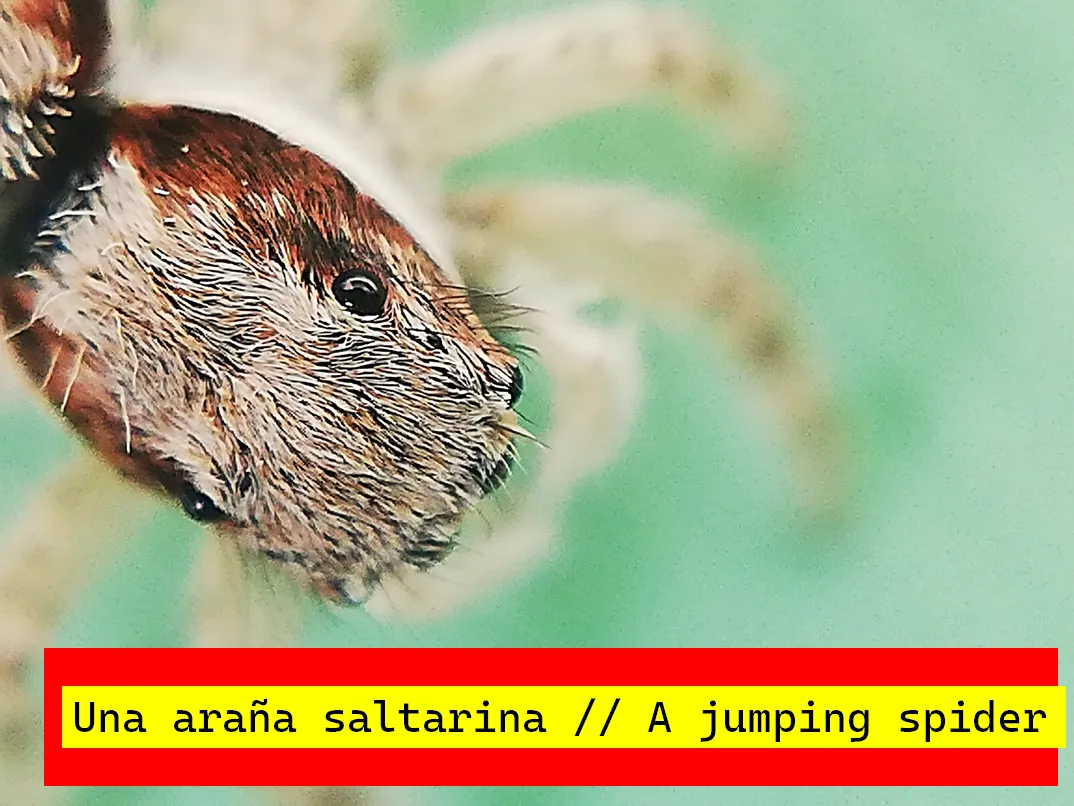
A pesar de que no es un insecto, quisiera compartir en esta comunidad las fotografías de una araña saltarina que me visitó hace unos días. Fue bastante difícil capturar las imágenes, sin embargo, hoy traigo las más lindas para compartir.
Although it is not an insect, I would like to share in this community the pictures of a jumping spider that visited me a few days ago. It was quite difficult to capture the images, however, today I bring the nicest ones to share.
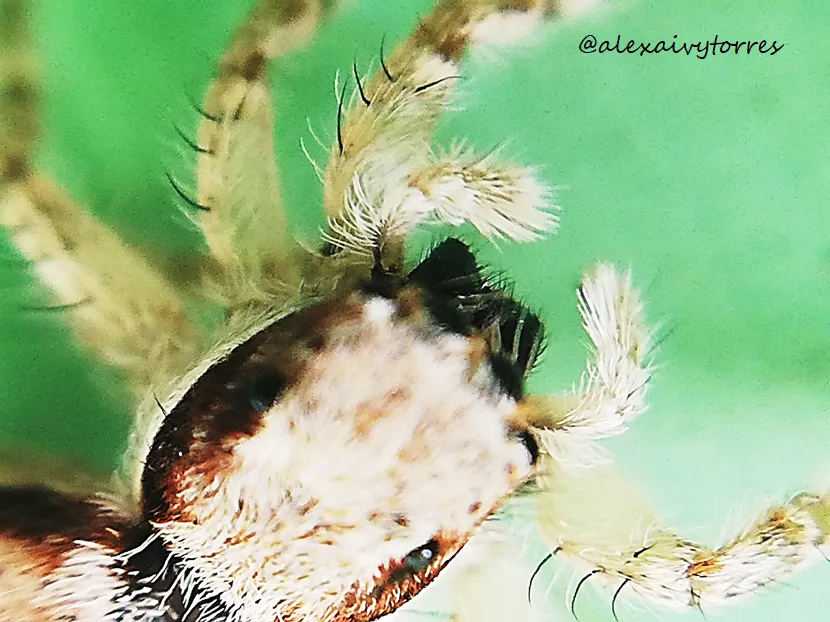
Como siempre busqué la ayuda de mi amigo @abneagro quien disfrutó del ejemplar encontrado y me ayudó a clasificar. Los arácnidos vienen a ser una de las clases más diversa y amplia de los quelicerados; de ellos, hoy hablaremos un poco sobre las arañas, quienes a su vez son uno de los artrópodos más conocidos.
As always I sought the help of my friend @abneagro who enjoyed the specimen found and helped me to classify. Arachnids happen to be one of the most diverse and broadest classes of chelicerates; of them, today we will talk a bit about spiders, which in turn are one of the best known arthropods.
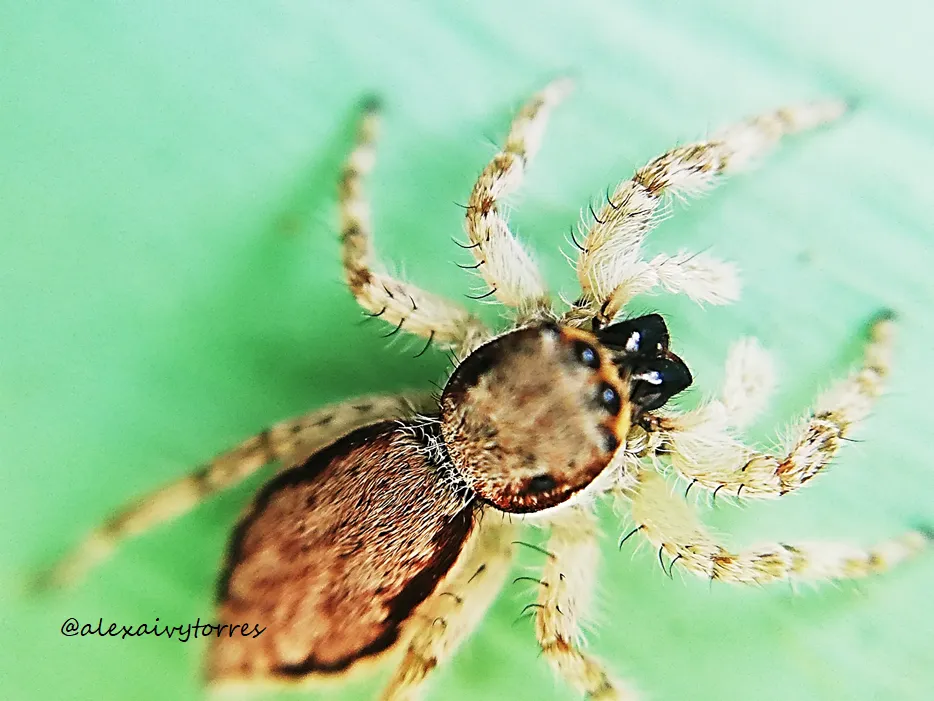
Una de las cosas más impresionantes de este grupo lo constituye se capacidad de generar una sustancia –seda- que al entrar en contacto con la atmósfera produce una especie de hilos, que cuidadosamente tejidos pueden llegar a tener varios usos –trampa cazainsectos, nidos o protección- ya que se muestran resistentes.
One of the most impressive things about this group is their ability to generate a substance -silk- that when in contact with the atmosphere produces a kind of threads, which carefully woven can have several uses -insect traps, nests or protection- since they are resistant.
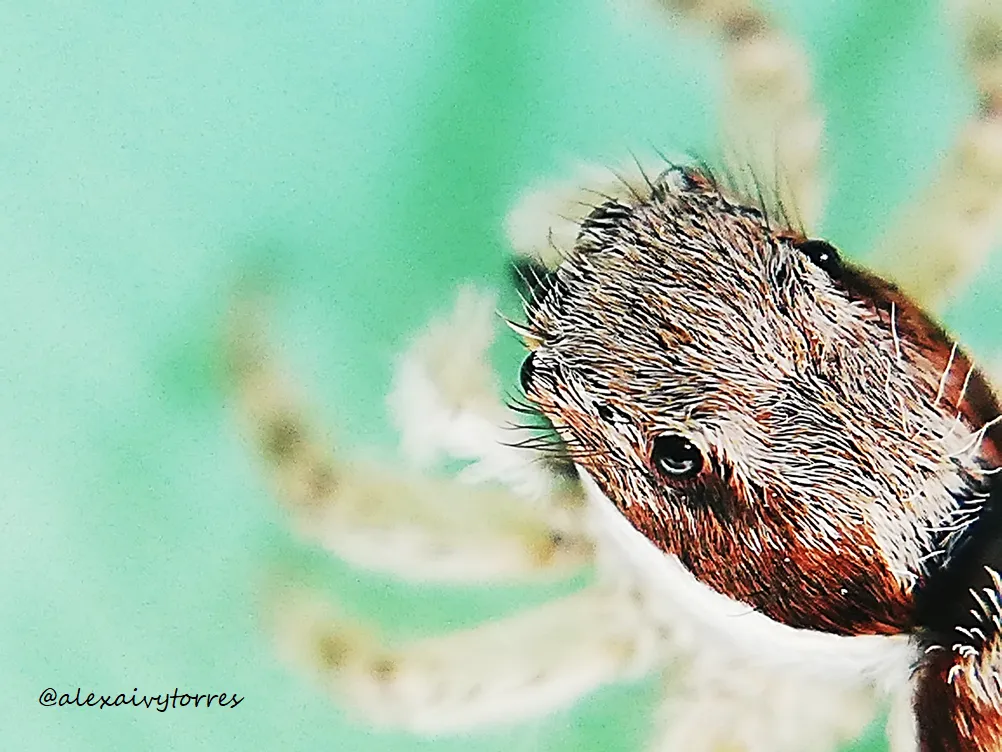
A diferencia de los insectos, su cuerpo posee dos segmentos: su prosoma y opistoma. Una de sus mejores capacidades adaptativas ha sido el hecho de poseer 4 pares de ojos, distintivos para cada familia. Sus pedipalpos, muy visibles en el video que hoy les presento, pueden actuar como órganos sensoriales e incluso lo utilizan para alimentarse.
Unlike insects, their body has two segments: their prosoma and opisthosoma. One of their best adaptive capabilities has been the fact that they have four pairs of eyes, distinctive for each family. Their pedipalps, very visible in today's video, can act as sensory organs and are even used for feeding.
Sus patas poseen unos pelos, que le permiten conocer el sitio donde se desplazan y son 4 los pares que la integran. Algunos autores aseguran que estas poseen un sexto sentido, gracias al uso que les dan a los pelos, quienes le permiten percibir las diferencias mecánicas del ambiente donde se mueven y estar alerta. Esta es una de sus principales formas de percibir los estímulos del entorno.
Their legs have hairs that allow them to know where they are moving and there are 4 pairs of legs. Some authors claim that they have a sixth sense, thanks to the use they make of the hairs, which allow them to perceive the mechanical differences in the environment where they move and to be alert. This is one of their main ways of perceiving environmental stimuli.
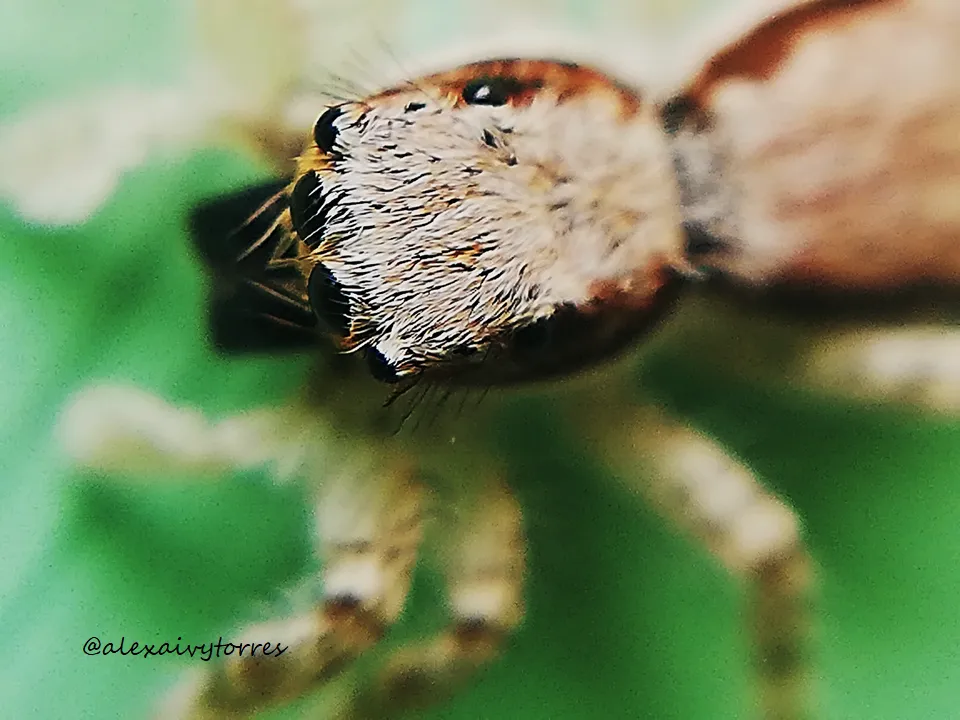
Sus ojos, a pesar de que son bastantes especializados, no son su principal estrategia para entender el medio. Poseen ocelos, que pueden llegar a permitirle una visión de 360 grados y ojos con una retina especializada en mirar hacia todas las direcciones.
Their eyes, although quite specialized, are not their main strategy to understand the environment. They have ocelli, which can allow 360-degree vision, and eyes with a retina specialized in looking in all directions.
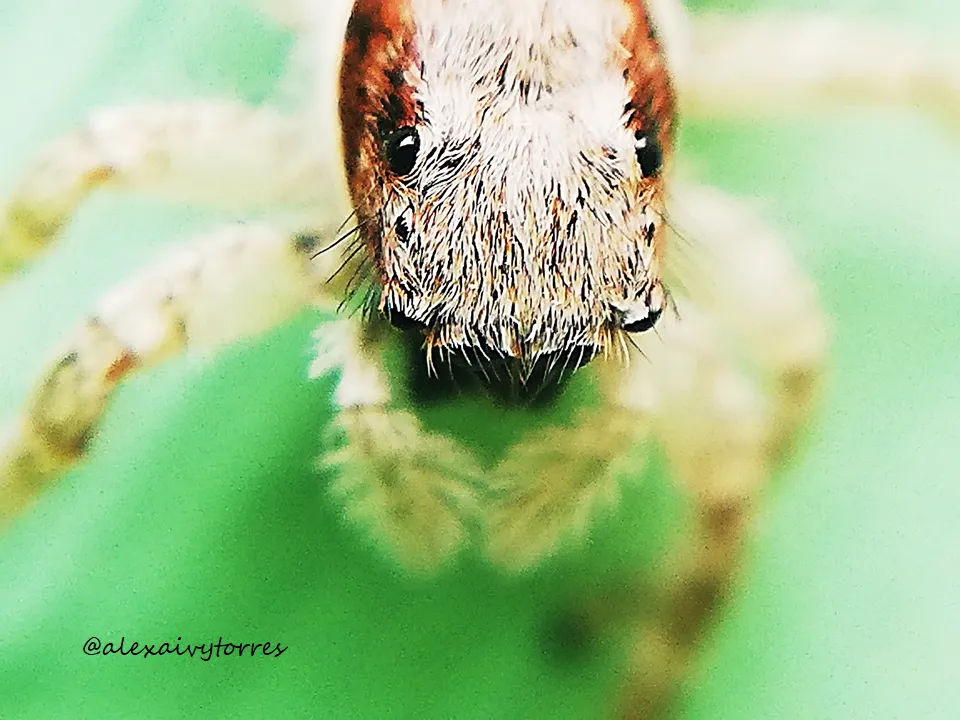
En discusiones con @abneagro y la ayuda de la aplicación Google lens hemos determinado que se trata de una araña saltadora del género Menemerus y pertenece a la familia Salticidae. Como lo pueden apreciar su color es algo grisáceo y se encuentra cubierta de pelos. Sus ojos son bastante grandes y se encuentran mirando hacia adelante. Sus pedipalpos son peludos y blancos, a diferencia del color de sus patas.
In discussions with @abneagro and the help of the Google lens application we have determined that this is a jumping spider of the genus Menemerus and belongs to the family Salticidae. As you can see its color is somewhat grayish and it is covered with hairs. Its eyes are quite large and face forward. Its pedipalps are hairy and white, unlike the color of its legs.
Las fotografías fueron captadas con mi dispositivo móvil Huawei, usando lentillas macro y editadas en Microsoft power point.
The photos were captured with my Huawei mobile device, using macro lenses and edited in Microsoft power point.
¡Gracias por leer! / Thanks for reading!


